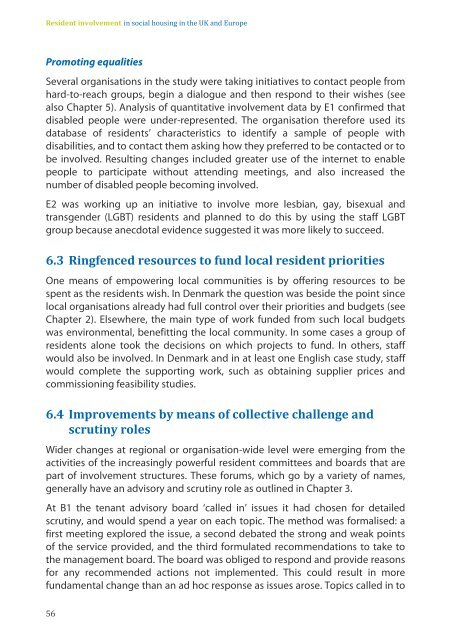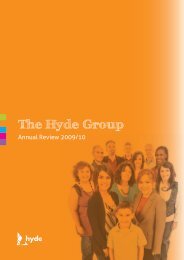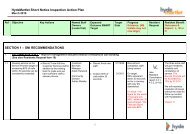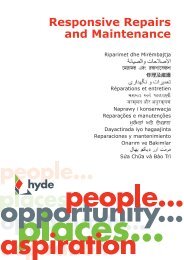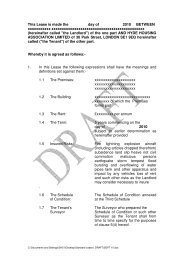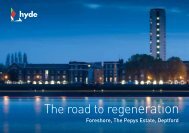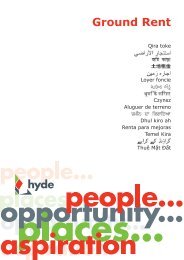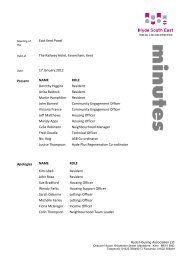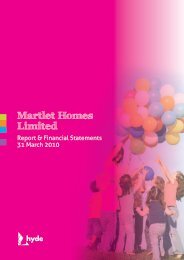Resident involvement - Hyde Housing Association
Resident involvement - Hyde Housing Association
Resident involvement - Hyde Housing Association
Create successful ePaper yourself
Turn your PDF publications into a flip-book with our unique Google optimized e-Paper software.
<strong>Resident</strong> <strong>involvement</strong> in social housing in the UK and Europe<br />
Promoting equalities<br />
Several organisations in the study were taking initiatives to contact people from<br />
hard-to-reach groups, begin a dialogue and then respond to their wishes (see<br />
also Chapter 5). Analysis of quantitative <strong>involvement</strong> data by E1 confirmed that<br />
disabled people were under-represented. The organisation therefore used its<br />
database of residents’ characteristics to identify a sample of people with<br />
disabilities, and to contact them asking how they preferred to be contacted or to<br />
be involved. Resulting changes included greater use of the internet to enable<br />
people to participate without attending meetings, and also increased the<br />
number of disabled people becoming involved.<br />
E2 was working up an initiative to involve more lesbian, gay, bisexual and<br />
transgender (LGBT) residents and planned to do this by using the staff LGBT<br />
group because anecdotal evidence suggested it was more likely to succeed.<br />
6.3 Ringfenced resources to fund local resident priorities<br />
One means of empowering local communities is by offering resources to be<br />
spent as the residents wish. In Denmark the question was beside the point since<br />
local organisations already had full control over their priorities and budgets (see<br />
Chapter 2). Elsewhere, the main type of work funded from such local budgets<br />
was environmental, benefitting the local community. In some cases a group of<br />
residents alone took the decisions on which projects to fund. In others, staff<br />
would also be involved. In Denmark and in at least one English case study, staff<br />
would complete the supporting work, such as obtaining supplier prices and<br />
commissioning feasibility studies.<br />
6.4 Improvements by means of collective challenge and<br />
scrutiny roles<br />
Wider changes at regional or organisation-wide level were emerging from the<br />
activities of the increasingly powerful resident committees and boards that are<br />
part of <strong>involvement</strong> structures. These forums, which go by a variety of names,<br />
generally have an advisory and scrutiny role as outlined in Chapter 3.<br />
At B1 the tenant advisory board ‘called in’ issues it had chosen for detailed<br />
scrutiny, and would spend a year on each topic. The method was formalised: a<br />
first meeting explored the issue, a second debated the strong and weak points<br />
of the service provided, and the third formulated recommendations to take to<br />
the management board. The board was obliged to respond and provide reasons<br />
for any recommended actions not implemented. This could result in more<br />
fundamental change than an ad hoc response as issues arose. Topics called in to<br />
56


